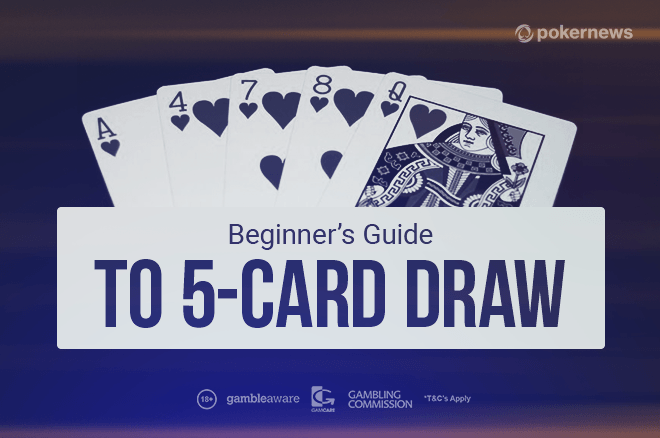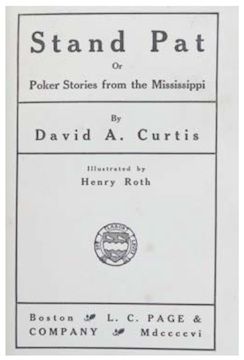Poker Stand Pat
Rules & Strategy for Badugi & Badeucy Poker
Badugi is a draw game gaining popularity in the poker world these days and for good reason - it's a very fun, action-packed poker game.
Excerpt from Stand Pat: Or Poker Stories From the Mississippi The things that I saw, that seemed worthy of note, I have set down without prejudice to the little town of Brownsville, which has grown since I was there. Let no citizen of the place pursue me vindictively because I found him less interesting than Stumpy. Stand Pat; Or, Poker Stories from the Mississippi Contents: A new poker deck - Three kings - Finish of the one-eyed man - Looking for Gallagher - Stumpy's dilemma.
Although it shares many aspects of its structure with other draw games, such as 2-7 Triple-Draw Lowball, Badugi uses an entirely distinct system for evaluating the winning hand.
Stand Pat Poker
A hand in Badugi is aptly named 'a Badugi.'
What is Badugi?
The origin of the card game Badugi is somewhat undetermined although many people have noted the similarity to the South Korean word 'baduk,' which means 'black and white pattern' - similar to what you might find in the game Go.
In North America it was reportedly played as 'Offsuit Lowball' in the 1980s in Winnipeg and a comparable high-low game was played in Toronto.
In Vegas some say it originated with poker pro Paul 'Eskimo' Clark, who reportedly brought the game back with him from his military service in Vietnam. These reports are unconfirmed, though.
How to Play Badugi
- Badugi is a 'blind game,' meaning the player to the left of the dealer puts in the small blind and the player to the left of the small blind puts in the big blind.
- Starting with the player on the left of the dealer and moving clockwise around the table, every player is dealt four cards facedown, one card at a time.
- Once all players have their four cards the first betting round starts with the player to the left of the big blind.
- Once the betting round has completed the players enter the first drawing round.
- Starting with the player on the dealer's left the player announces how many cards he would like to throw away from his hand and receives new ones in return.
- The dealer deals all of the cards to that player at once and moves on to the next player.
- A player can choose to throw away no cards, keeping their hand intact. This is known as standing pat or rapping pat.
- Once all players have received their new cards the second betting round begins, starting with the player to the left of the dealer.
- This pattern repeats until either:
- Only one player is left, the rest having folded.
- The players have completed the betting round after the third drawing round.
If you'd like more information on things such as betting rounds or blinds, head to this article:
Badugi Hand Rankings
Once all betting is complete the best Badugi wins the pot.
- A Badugi must be made up of the lowest one to four cards from a player's hand.
- Hands are counted from the highest card down; the value of the hand is based on how low the highest cards in the hand are.
- Aces are low.
- All cards used must be of different suits and ranks.
- Any four-card Badugi beats any three-card Badugi.
- A two-card Badugi is beaten by any three- or four-card Badugi.
How to Read Badugi Hands
- A♥2♣3♦4♠ - This is the best possible Badugi, known as a 'four-card 4.'
- A♥2♣3♦3♣ - Since you cannot have a pair this hand can't use the second three, making the hand a 'three-card 3.' This hand would lose to any four-card Badugi.
- 2♣3♣7♥9♠ - This is a three-card 9. Since the 3♠ is of the same suit as the 2♣, the higher of the two cards cannot be used.
- A♥2♣3♦10♠ versus 4♥6♦7♣9♠. The second hand wins with a four-card 9 beating the four-card 10.
Any two players holding the same hand split the pot. Once the player with the winning hand has received the pot, the player who was to the left of the dealer becomes the new dealer for the next hand.
Play Badugi online, free
The best way to get a proper handle on how to play Badugi poker (and how to play it well) is to play some actual Badgui hands, either live or online.
The best way we've found to get some free Badugi poker in is on PokerStars, where you can create an account and access the play-money games. You can play free Badugi poker online until your heart's content; then, when you're ready to try it out for real-money you can easily add a deposit to your account.
Get a new PokerStars and access to our up to $600 bonus via the link below:
How to Play Badeucy Poker
Two poker games that have exploded in popularity over the last couple of years are Badugi (as explained above) and 2-7 Triple Draw Lowball. Both are draw poker variants and tend to produce a lot of action.
Somewhere along the line someone also decided to make a split pot game by combining the two games. Badeucy was born.
Aces Are Bad
As a quick refresher: In 2-7 Triple Draw Lowball you're looking to make the lowest five-card hand. Straights and flushes hurt your hand and an ace is always high.
In Badugi you're looking for a four-card hand with one of each suit. This is called a Badugi. If more than one player has a Badugi, the lowest hand wins.
Normally the lowest Badugi is A-2-3-4. However, in Badeucy, aces are also high for the Badugi hand. This makes the best Badugi hand 2-3-4-5.Most Badeucy games run six-handed.
In Badeucy the goal is to scoop the full pot by taking half with the best 2-7 hand and the other half with the best Badugi.
Playing Badeucy
Most Badeucy games are played six-handed and fixed-limit betting is generally used. A button will determine the dealer position and the two players to the left of the dealer post the small and big blinds.
Once blinds are posted each player is dealt five cards. After a round of betting the remaining players may exchange cards or stand pat.
Players can exchange up to five cards, but this is not typical.
There are three draws in Badeucy with a round of betting after each round. Betting on the deal and after the first draw is in the small bet amount, or the size of the big blind.
Betting on the second and third draw is done in the big bet amount, typically double the big blind. After the third draw and final round of betting the remaining players go to showdown.
The player with the best 2-7 lowball hand wins half the pot and the player with the best Badugi hand wins the other half. In the event the same player wins both hands, he or she scoops the pot.Play Badeucy Now!
Basic Badeucy Strategy Tips
Like most split-pot games you want to focus on starting hands that give you the best possibility to scoop.
First, stay away from higher Badugis when possible. Since everyone is getting five cards instead of four the odds of improving to a lower Badugi increases.


For starting hands try and focus on playing hands requiring just two cards to complete a hand. Preferably you want at least three suits to start with. That way you have three draws to your Badugi and you can focus on your 2-7 hand.
Pump Your One-Way Hands
Unlike Stud 8 or Omaha 8 this is one game where you want to pump your one-way hands.
Let's say you get dealt 2s-3s-4s-5h-7d. You have the nut 2-7 hand but no badugi. In this case, don't worry about the other half and try and pump the pot.
Odds are that you will have multi-way action to the end and win half of a nice pot. Yes, there is a chance you could get quartered by someone else hitting the same 2-7 hand.
However the odds of that happening are not the same as in Omaha Hi-Lo. If there is a lot of action in a pot after the first draw and you have to draw more than one card it might be time to abandon the hand.
Unless your game is very loose a lot of action after the draw is usually being driven by one or more players with at least half a made hand. These players are freerolling and pumping the pot. You're drawing and should wait for a better spot.
More Poker Games:
English[edit]
Poker Stand Pattern
Etymology[edit]
Probably originally a poker phrase, with 'pat' equaling 'optimal', meaning that drawing more cards is unnecessary. Later the phrase came to be employed in other spheres. 'Stand pat' was actively used in U.S. political campaigns of the 1900s, quickly gaining a sense of 'being reactionary, resistant to dramatic changes in policy'. Moreover, a noun 'standpatterstand-patter' was coined to denote such politicians.[1]
Pronunciation[edit]
Audio (AU)
Verb[edit]

Poker Stand Patio Heater
(third-person singular simple presentstands pat, present participlestanding pat, simple past and past participlestood pat)
- (intransitive,poker) To play one's hand without drawing any more cards.
- 1920, Peter B. Kyne, The Understanding Heart, Chapter IV
- With a mixed hand and the highest card the curse of Scotland, I've seen that man stand pat in a game with four millionaire mining men.
- 1920, Peter B. Kyne, The Understanding Heart, Chapter IV
- (intransitive, blackjack) To stop hitting; to declare one's hand as final.
- After getting a hand of 20, the player stood pat.
- Synonyms:stand, stick(UK)
- (idiomatic) To resist changes.
- 2012, 'Asia's Local Growth Dilemma', Wall Street Journal, by Alex Frangos, 21st of July:
- China has cut rates and allowed banks to boost lending, while some countries, such as South Korea have stood pat, fearful that inflation pressures could reignite.
- 2012, 'Asia's Local Growth Dilemma', Wall Street Journal, by Alex Frangos, 21st of July:
Derived terms[edit]
Stand Pat In Poker
- standpatism, standpattism
References[edit]
- ^ Safire's Political Dictionary, William Safire, Oxford University Press, Mar 31, 2008; page 700